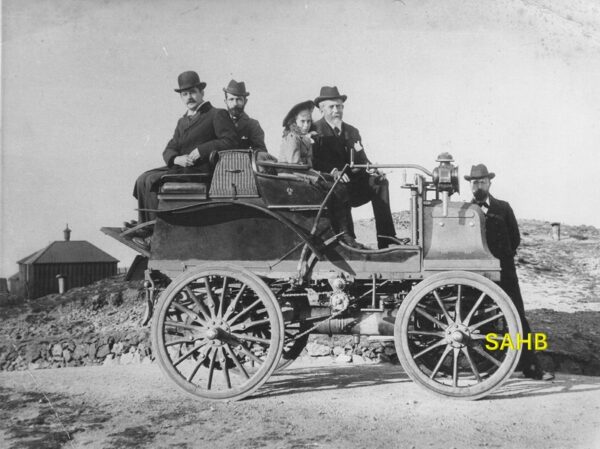
The history of Daimler in Britain effectively started with a visit by a young Englishman, Frederick Simms, to the Bremen exhibition, where he was entranced by the small ten-passenger railcars that were taking visitors around the grounds. Simms was a mechanical engineer, and had been looking for a small power unit for a project he had in mind for an overhead cable car for showgrounds and funfairs to give visitors the sensation of flying. Asking about the railcars, he discovered that they had been built by Gottlieb Daimler. He sought out the inventor and, despite the age difference, the two immediately got on well. Daimler told Simms of his project to build a motor car.
The German Daimler company was struggling to make money and had to be refinanced later in 1890. Daimler had still not sold a motor carriage (that happened in 1892). But Simms was determined to use Daimler’s engines to produce such a carriage, as well petrol-powered boats. In 1891 he managed to acquire the agency for Daimler engines, and his first demonstrations were of a Daimler motor-launch, operational by May 1892 on the River Thames by Putney Bridge.
The British Daimler agency was successful – and in 1893 Simms founded the Daimler Motor Syndicate. Two years later, Simms started to build Daimler engines and Daimler-powered launches in England, and one of his customers for such a launch was the Hon. Evelyn Ellis, a wealthy landowner (who appears later in our short story). In June 1895 Simms and Ellis bought, in France, and brought to England, one of the first petrol-powered cars into the UK.
But it was the promoter Henry Lawson, not Simms, who made the move that enabled Daimler to make cars in England. On 15 October 1895 Lawson’s syndicate offered Simms £35,000 to acquire his Daimler patent rights. Simms sold out, but remained as a consultant, and the new Daimler Motor Co. Ltd. was registered by Lawson on 14 January 1896.
The history of Daimler in England developed rapidly. By 1897 the Daimler factory in Coventry was manufacturing a significant number of cars; at the end of February 1898, it had sold and delivered 89 complete vehicles or motors and frames, plus 24 engines for other applications.
Which brings us to our Snapshot. Evelyn Ellis had become a highly influential figure in early motoring who never missed an opportunity to demonstrate the capabilities of the new-fangled motor car. This photo shows him involved in one such event. On 12 October 1897, to prove the Daimler’s hill climbing capabilities, James Critchley, the works manager of Daimler in Coventry, drove Evelyn Ellis and his nine-year-old daughter Mary to the top of Worcestershire Beacon, 1,395 feet, the highest of the Malvern Hills. The track was rough, and some of it was at a gradient of 1 in 4.
Mary later developed a taste for motorbike racing, and after her father’s death in 1913 Mary bought a Spyker racing car which she used in time trials at Brooklands.
Image courtesy of Peter Card







Leave a Comment